
Mission San José is a Spanish mission located in the present-day city of Fremont, California, United States. It was founded on June 11, 1797, by the Franciscan order and was the fourteenth Spanish mission established in California. The mission is the namesake of the Mission San José district of Fremont, which was an independent town subsumed into the city when it was incorporated in 1957. The Mission entered a long period of gradual decline after Mexican secularization act of 1833. After suffering decline, neglect and earthquakes most of the mission was in ruins. Restoration efforts in the intervening periods have reconstructed many of the original structures. The old mission church remains in use as a chapel of Saint Joseph Catholic Church, a parish of the Diocese of Oakland. The museum also features a visitor center, museum, and slide show telling the history of the mission.
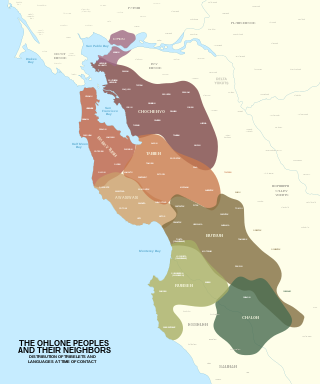
The Ohlone, formerly known as Costanoans, are a Native American people of the Northern California coast. When Spanish explorers and missionaries arrived in the late 18th century, the Ohlone inhabited the area along the coast from San Francisco Bay through Monterey Bay to the lower Salinas Valley. At that time they spoke a variety of related languages. The Ohlone languages make up a sub-family of the Utian language family. Older proposals place Utian within the Penutian language phylum, while newer proposals group it as Yok-Utian.

The Rumsen language is one of eight Ohlone languages, historically spoken by the Rumsen people of Northern California. The Rumsen language was spoken from the Pajaro River to Point Sur, and on the lower courses of the Pajaro, as well as on the Salinas and Carmel Rivers, and the region of the present-day cities of Salinas, Monterey and Carmel.

The Coast Miwok are an Indigenous people of California that were the second-largest tribe of the Miwok people. Coast Miwok inhabited the general area of present-day Marin County and southern Sonoma County in Northern California, from the Golden Gate north to Duncans Point and eastward to Sonoma Creek. Coast Miwok included the Bodega Bay Miwok, or Olamentko (Olamentke), from authenticated Miwok villages around Bodega Bay, the Marin Miwok, or Hookooeko (Huukuiko), and Southern Sonoma Miwok, or Lekahtewutko (Lekatuit). While they did not have an overarching name for themselves, the Coast Miwok word for people, Micha-ko, was suggested by A. L. Kroeber as a possible endonym, keeping with a common practice among tribal groups and the ethnographers studying them in the early 20th century and with the term Miwok itself, which is the Central Sierra Miwok word for 'people'.
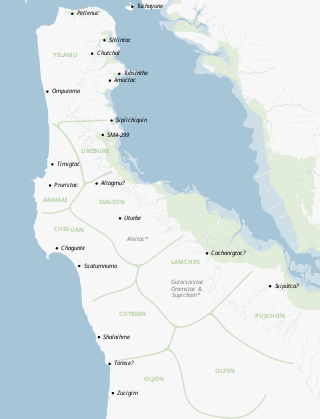
The Ramaytush or Rammay-tuš people are a linguistic subdivision of the Ohlone people of Northern California. The term Ramaytush was first applied to them in the 1970s, but the modern Ohlone people of the peninsula have claimed it as their ethnonym. The ancestors of the Ramaytush Ohlone people have lived on the peninsula—specifically in the area known as San Francisco and San Mateo county—for thousands of years. Prior to the California Genocide, the Ohlone people were not consciously united as a singular socio-political entity. In the early twentieth century anthropologists and linguists began to refer to the Ramaytush Ohlone as San FranciscoCostanoans—the people who spoke a common dialect or language within the Costanoan branch of the Utian family. Anthropologists and linguists similarly called the Tamyen people Santa Clara Costanoans, and the Awaswas people Santa Cruz Costanoans.

The Yelamu are a local tribe of Ohlone people from the San Francisco Bay Area in Northern California. The Yelamu speak a language called Ramaytush. The modern Association of Ramaytush Ohlone (ARO) are the descendants of the Ramaytush.

The Karkin language is an extinct Ohlone language. It was formerly spoken in north central California, but by the 1950s there were no more native speakers. The language was historically spoken by the Karkin people, who lived in the Carquinez Strait region in the northeast portion of the San Francisco Bay estuary. The name 'Karkin' means 'trader' in some varieties of Ohlone.
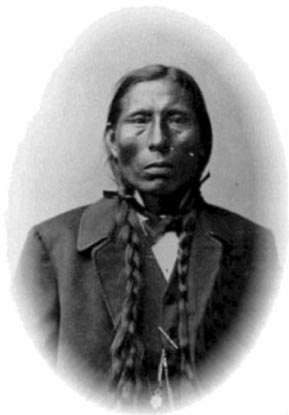
The Suisunes were a Patwin tribe of Wintun people, originating in the Suisun Bay and Suisun Marsh regions of Solano County in Northern California. Their traditional homelands stretched between what is now Suisun City, Vacaville and Putah Creek around 200 years ago. The Suisunes' main village, Yulyul, is believed to be where Rockville, California is located today. Father Abella, visitor to the tribe in 1811, indicated they resided in the present location of Fairfield, north of the Suisun Bay. One of the Suisunes' primary food sources was acorns. Their diet also included fish as well as miner's lettuce. Their huts were conical wikiups made of rushes or tule thatch.

The Chalon people are one of eight divisions of the Ohlone (Costanoan) people of Native Americans who lived in Northern California. Chalon is also the name of their spoken language, listed as one of the Ohlone languages of the Utian family. Recent work suggests that Chalon may be transitional between the northern and southern groups of Ohlone languages.
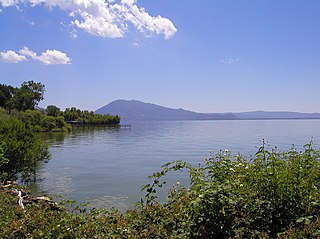
The Lake Miwok are a branch of the Miwok, a Native American people of Northern California. The Lake Miwok lived in the Clear Lake basin of what is now called Lake County. While they did not have an overarching name for themselves, the Lake Miwok word for people, Hotsa-ho, was suggested by A. L. Kroeber as a possible endonym, keeping with a common practice among tribal groups and the ethnographers studying them in the early 20th Century and with the term Miwok itself, which is the Central Sierra Miwok word for people.

The Plains and Sierra Miwok were once the largest group of California Indian Miwok people, Indigenous to California. Their homeland included regions of the Sacramento Valley, San Joaquin Valley, and the Sierra Nevada.

The Tamien people are one of eight linguistic divisions of the Ohlone (Costanoan) people groups of Native Americans who live in Northern California. The Tamien traditionally lived throughout the Santa Clara Valley. The use of the name Tamien is on record as early as 1777; it comes from the Ohlone name for the location of the first Mission Santa Clara on the Guadalupe River. Father Pena mentioned in a letter to Junipero Serra that the area around the mission was called Thamien by the native people. The missionary fathers erected the mission on January 17, 1777, at the native village of So-co-is-u-ka.
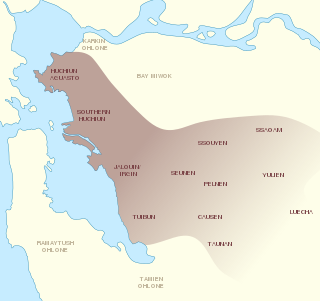
The Chochenyo are one of the divisions of the Indigenous Ohlone (Costanoan) people of Northern California. The Chochenyo reside on the east side of the San Francisco Bay, primarily in what is now Alameda County, and also Contra Costa County, from the Berkeley Hills inland to the western Diablo Range.
Tamcan or Tammukan was a local tribe of Delta Yokuts-speaking natives in the U.S. that once lived on the lower reaches of California's San Joaquin River in what is now eastern Contra Costa County and western San Joaquin County, California. The Tamcans were absorbed into the system of the Spanish missions in California in the early nineteenth century; they moved to Mission San José, near the shore of San Francisco Bay, between 1806 and 1811. At the mission, they and their descendants intermarried with speakers of the San Francisco Bay Ohlone, Plains Miwok, and Patwin Indian languages. Mission Indian survivors of these mixed groups gathered at Alisal, near Pleasanton in Contra Costa County, in the late nineteenth century.

The Ohlone languages, also known as Costanoan, form a small Indigenous language family historically spoken in Northern California, both in the southern San Francisco Bay Area and northern Monterey Bay area, by the Ohlone people. Along with the Miwok languages, they are members of the Utian language family. The most recent work suggests that Ohlone, Miwok, and Yokuts are branches of a Yok-Utian language family.
The Ramaytush language is one of the eight Ohlone languages, historically spoken by the Ramaytush people who were indigenous to California. Historically, the Ramaytush inhabited the San Francisco Peninsula between San Francisco Bay and the Pacific Ocean in the area which is now San Francisco and San Mateo Counties. Ramaytush is a dialect or language within the Ohlone branch of the Utian family. The term Ramaytush was first applied to it during the 1970s, and is derived from the term rammay-tuš "people from the west". It is extinct, but efforts are being taken to revive it.

The Rumsen are one of eight groups of the Ohlone, an indigenous people of California. Their historical territory included coastal and inland areas within what is now Monterey County, California, including the Monterey Peninsula.
The Karkin people are one of eight Ohlone peoples, indigenous peoples of California.

Awaswas, or Santa Cruz, is one of eight Ohlone languages. It was historically spoken by the Awaswas people, an indigenous people of California. The last speaker of Awaswas died in the 19th century, and the language has been extinct ever since.













